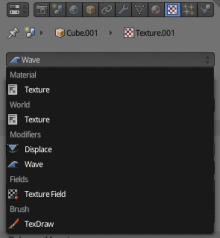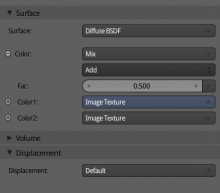Doc:2.6/Manual/Render/Cycles/Texture Editing
Texture Editing
3D viewport draw types, UV mapping, and texture painting work somewhat differently when Cycles is enabled. UV Maps no longer get image textures assigned themselves; rather they must always be assigned by adding an image texture node to a material.
3D Viewport Draw Types
The Texture draw types used for Blender Internal have been replaced by three others in Cycles:
- Texture: this draw mode is used for editing, painting and mapping individual textures. Lighting is the same as in solid mode, so this is similar to the existing textured solid for Blender Internal. The texture drawn is the active image texture node for the material.
- Material: a simplified version of the entire material is drawn using GLSL shaders. This uses solid lighting, and also is mostly useful for editing, painting and mapping textures, but while seeing how they integrate with the material.
- Rendered: in this draw mode the render engine does the drawing, interactively refining the full rendered image by taking more samples. Unlike offline rendering, objects still use the viewport rather than render resolution and visibility.
Texture Properties
In the texture properties, the texture can now be selected from a list that contains all texture nodes from the world, lamps and materials, but also from e.g. modifiers, brushes and physics fields.
For shading nodes, the available textures are Cycles textures. For others, Blender textures are still used, but this will change in the future.
Painting & UV Editing
For texture paint mode, the image that is painted on is taken from the slot panel in the toolbar. Selecting a slot also sets the active image texture.
For UV mapping, the active UV map as specified in the mesh properties is used. Assigning images in the image editor also affects the active image texture node.


